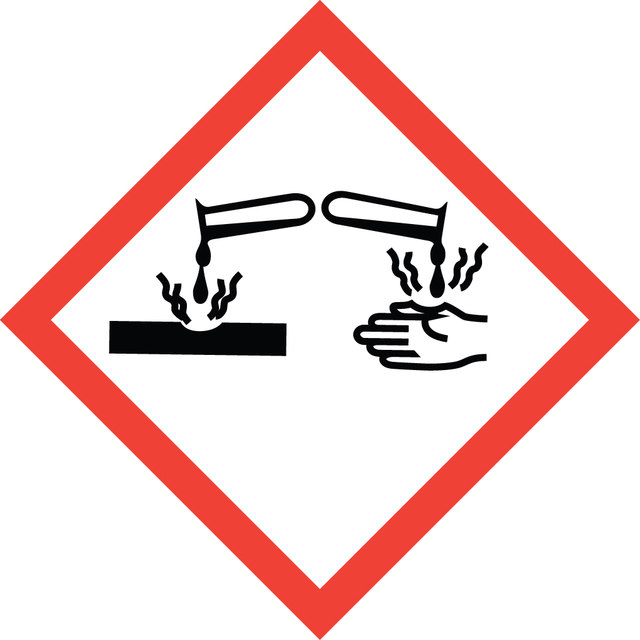646547
Tris(2-carboxyethyl)phosphine hydrochloride solution
0.5 M, pH 7.0(aqueous solution; pH was adjusted with ammonium hydroxide)
Synonim(y):
TCEP
Zaloguj sięWyświetlanie cen organizacyjnych i kontraktowych
About This Item
Wzór empiryczny (zapis Hilla):
C9H15O6P · HCl
CAS Number:
Masa cząsteczkowa:
286.65
Numer MDL:
Kod UNSPSC:
12352128
Identyfikator substancji w PubChem:
NACRES:
NA.25
Pomoc techniczna
Potrzebujesz pomocy? Nasz zespół doświadczonych naukowców chętnie Ci pomoże.
Pozwól nam pomócPomoc techniczna
Potrzebujesz pomocy? Nasz zespół doświadczonych naukowców chętnie Ci pomoże.
Pozwól nam pomócstężenie
0.5 M
współczynnik refrakcji
n20/D 1.367
pH
7.0(aqueous solution; pH was adjusted with ammonium hydroxide)
gęstość
1.041 g/mL at 25 °C
ciąg SMILES
Cl.OC(=O)CCP(CCC(O)=O)CCC(O)=O
InChI
1S/C9H15O6P.ClH/c10-7(11)1-4-16(5-2-8(12)13)6-3-9(14)15;/h1-6H2,(H,10,11)(H,12,13)(H,14,15);1H
Klucz InChI
PBVAJRFEEOIAGW-UHFFFAOYSA-N
Powiązane kategorie
Opis ogólny
It belongs to the trialkylphosphine class.
Tris (2-carboxyethyl) phosphine (TCEP) is very effective in cleaving disulfide bonds in aqueous solution. It dissolves in water and is odorless, unlike other trialkylphosphines (tributylphosphine). It is also less toxic than 2-mercaptoethanol. These advantages make it better than the other reducing agents.
Zastosowanie
Tris (2-carboxyethyl) phosphine (TCEP) can be used in several downstream applications including SDS-PAGE, mass spectrometry, labeling with cysteine specific tags, and modification of cysteine containing compounds. It prevents oxidation of protein samples, which makes it a useful buffer component as it helps to preserve enzymatic activity. It has been used in the reduction and measurement of glutathione.
Tris (2-carboxyethyl) phosphine (TCEP) has also been used:
- to cleave cysteine residues in a synthetic peptide
- in reduction buffer for RNA Sequential Probing of Targets (SPOTs) imaging
- for the reduction of oligonucleotides
- as reducing agent during mitochondrial isolation
Działania biochem./fizjol.
As a non-mercaptan reducing agent, it avoids the toxicity inherent in thiol-containing compounds. It is capable of disrupting the botulinum neurotoxin B heavy-chain/light-chain complex that is held together by a single disulfide bond, and that is responsible for endocytosis, and ultimately the toxicity, of the toxin. Since disulfide-coupled subunits are characteristic of many toxins (e.g., ricin, snake venom, and all BoNT serotypes), it may be useful as a rescue prophylactic in cases of toxin administration.
Tris(2-carboxyethyl)phosphine hydrochloride solution reduces the disulfide bonds and leaves other functional groups intact in proteins.
Ta strona może zawierać tekst przetłumaczony maszynowo.
Hasło ostrzegawcze
Danger
Zwroty wskazujące rodzaj zagrożenia
Zwroty wskazujące środki ostrożności
Klasyfikacja zagrożeń
Eye Dam. 1 - Skin Corr. 1B
Kod klasy składowania
8A - Combustible corrosive hazardous materials
Klasa zagrożenia wodnego (WGK)
WGK 1
Środki ochrony indywidualnej
Faceshields, Gloves, Goggles, type ABEK (EN14387) respirator filter
Wybierz jedną z najnowszych wersji:
Masz już ten produkt?
Dokumenty związane z niedawno zakupionymi produktami zostały zamieszczone w Bibliotece dokumentów.
Nasz zespół naukowców ma doświadczenie we wszystkich obszarach badań, w tym w naukach przyrodniczych, materiałoznawstwie, syntezie chemicznej, chromatografii, analityce i wielu innych dziedzinach.
Skontaktuj się z zespołem ds. pomocy technicznej